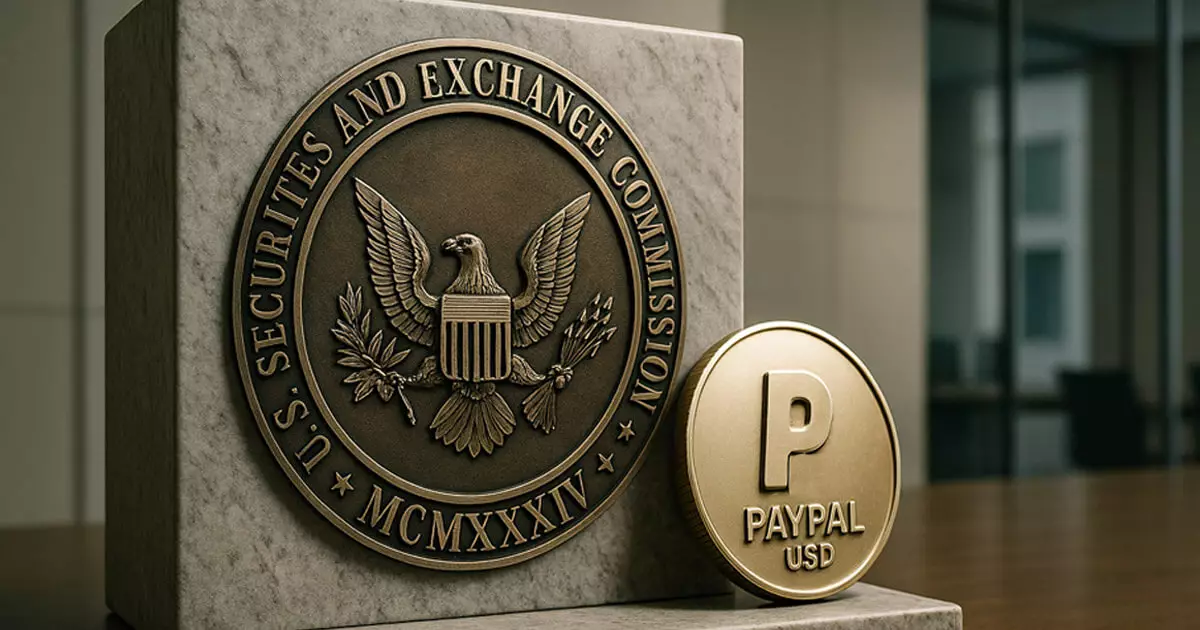The recent announcement from the U.S. Securities and Exchange Commission (SEC) to cease its inquiry into PayPal’s dollar-backed stablecoin, PYUSD, marks a significant turning point for both the fintech giant and the wider stablecoin ecosystem. By choosing not to pursue enforcement actions after a previous subpoena, the SEC has essentially delivered the good news that PYUSD is not considered an unregistered security. This regulatory clearance not only alleviates the potential legal burdens hanging over PayPal and its issuer Paxos but also invites optimism and illustrates a shifting attitude toward certain stablecoin frameworks.
The closure of this inquiry is indicative of a more measured regulatory approach, particularly under the new leadership following Gary Gensler’s tenure, during which many digital assets were labeled as securities. As the winds of regulatory change blow more favorably toward innovative financial solutions, it is interesting to consider how this could spur greater adoption of PYUSD.
A Legislative Breeze: The GENIUS Act Gains Traction
With regulatory concerns somewhat alleviated, a legislative vacuum may soon be filled by initiatives like the GENIUS Act, a bipartisan Senate bill aimed at establishing a separate pathway for payment stablecoins. The bill proposes crucial measures, such as licensing frameworks and strict reserve requirements that promise to bring much-needed clarity to the market.
This legislative movement signals a recognition of stablecoins as a vital component of modern payment ecosystems. If adopted, the GENIUS Act could expedite the integration of innovative financing models into the broken institutions of our time, allowing businesses to navigate the complexities of digital currencies more easily. This clarity paves the way for further innovation that may well position the U.S. as a leader in global fintech.
Paving New Payment Rails: The Strategy Behind PYUSD
Despite holding a modest market share of less than 0.5% in the global stablecoin market, PayPal’s framing of PYUSD as central to its long-term strategy tells a different story. By integrating PYUSD across its platforms, including Venmo, and enabling seamless external transfers, PayPal is bypassing traditional card networks to build native, stablecoin-based payment rails. This thrust toward modernization aims to enhance transactional efficiency for over 20 million small businesses by 2025—a move that effectively acknowledges the inadequacies of the current payment architecture.
Yet, while PayPal’s broader digital currency strategy is commendable, one must also introduce caution into the conversation. The duality of ambition and uncertainty looms large as custodial challenges remain. The company openly admits that digital assets may lack traditional bankruptcy protections. Hence, while PYUSD seeks to disrupt existing frameworks, it must navigate the treacherous waters of legal ambiguity and systemic risk.
Market Dynamics: Incentives for Adoption
In light of this legal reprieve, market dynamics are poised for transformation. Coinbase has already waived trading fees for PYUSD and instituted one-click redemption to USD, fostering an ecosystem that prioritizes liquidity and ease of use. These incentives can not only enhance user experience but also potentially expedite the initial adoption of this novel stablecoin.
As more platforms promote seamless integration with PYUSD, the real challenge will be maintaining a user-friendly interface that demystifies the technology behind stablecoins. For average consumers and small businesses, the allure lies not just in the stability of a dollar-backed token but in the ease with which they can transact. This type of confidence is crucial when aiming for broader acceptance and repeated use.
Looking Ahead: A Future Untethered from Fragmentation
Even though the SEC has chosen not to pursue severe enforcement actions on PYUSD, the bigger picture reveals a fragmented regulatory environment still fraught with uncertainties. As PayPal continues to face additional inquiries from other regulatory bodies, including the Consumer Financial Protection Bureau and Germany’s Federal Cartel Office, there remains a palpable tension between innovation and governance.
The recent discussions surrounding “Covered Stablecoins,” defined as fully reserved and non-yield-bearing, point toward a nebulous regulatory framework that lacks unambiguous bite. While SEC guidance offers some hope, it is insufficient to bridge the gaps untamed by previously established securities laws.
As we look forward, the onus is on legislators, fintech innovators, and industry stakeholders to collaborate in defining a future where digital currencies can flourish without the shackles of ambiguity and fear. Only then can stablecoins like PYUSD genuinely change the financial landscape for the better.

